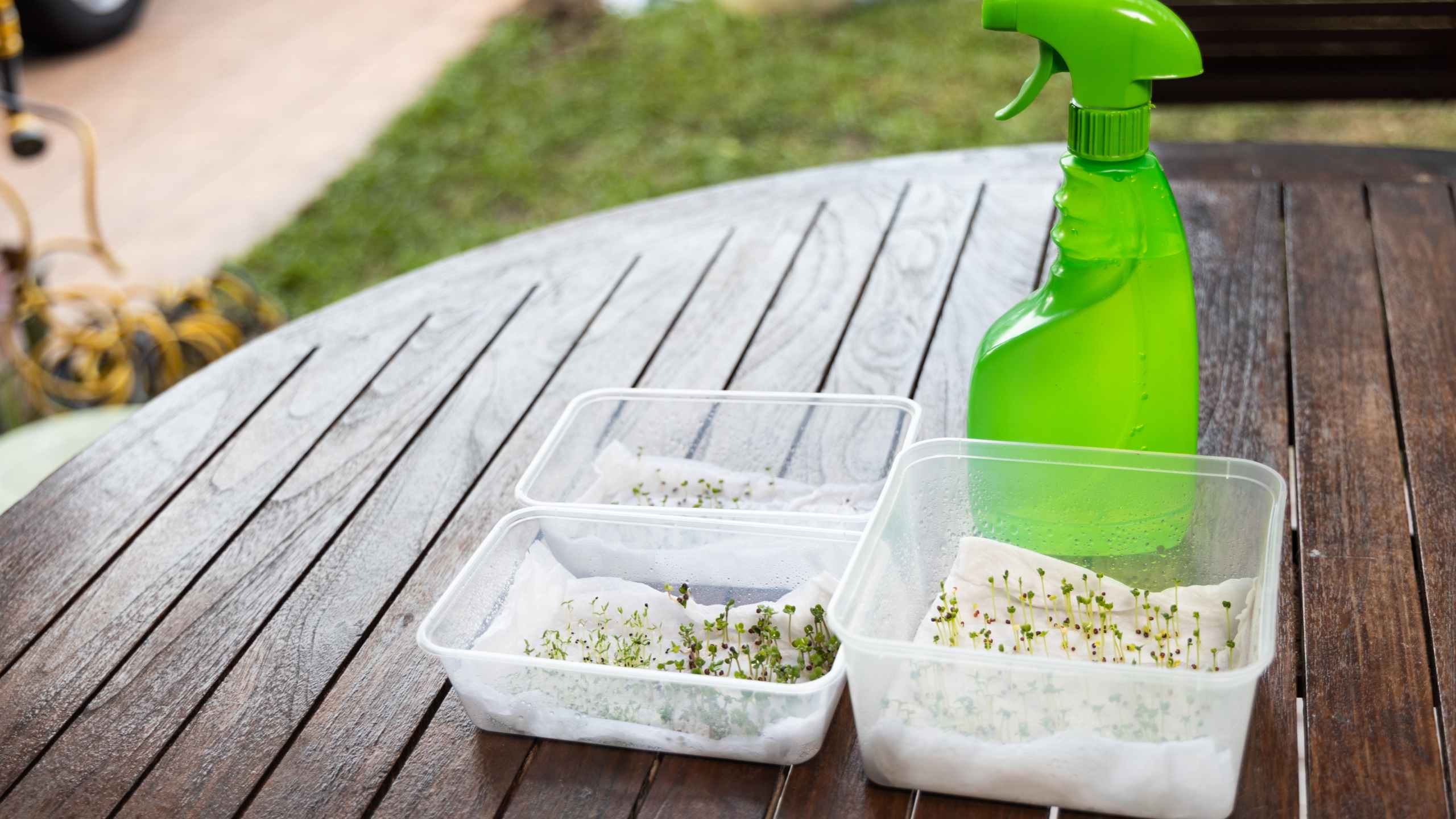Growing vegetable seeds in your garden is a great way to produce organic, homemade vegetables without concerns about their quality compared to store-bought ones.
In this article, we’ll guide you on germinating your vegetable seeds organically in your garden.
While it may be not the easiest task, by the end of this article, you’ll gain fundamental knowledge and essential tips for successful germination.
Let’s start with some of the most frequently asked questions people have when it has to do with germinating seeds!
Do seeds germinate faster in paper towels?
If you are a beginner, paper towels are among the best options to have to grow seeds. You save money and time by using paper towels as your pots and without soil. Paper towels are in every household so you can try to experiment straight away.
So, to answer the question, seeds germinate faster in paper towels than in soil. They usually grow in a matter of days, (or fewer, depending on the type of seed) thanks to the warmth, moisture, and regulated environment within a plastic baggie – where you should place them.
Also, based on my experience all the vegetable seed type seems to grow without a problem. So, you can choose any vegetable seeds you prefer and they should grow nicely.
What is the fastest way to germinate vegetable seeds?
Ever wondered what is the fastest way to germinate vegetable seeds? I have tried a few different methods!
Just follow the steps below and you’ll be on the right path to germinating vegetable seeds in the fastest way possible.
- Choose Top-Grade Seeds: Begin with top-notch, recently harvested seeds obtained from a trustworthy supplier. For details on the best germination environment for the particular vegetable you’re planting, check the seed packet.
- Pre-Soaking: It is beneficial to pre-soak seeds before planting in containers. This may facilitate quicker germination by softening the seed coat. But not all seeds need to be pre-soaked, so find out specifically what the guidelines are for the crops you plan to plant.
- Use a Seed Starting Mix: Forget about using ordinary garden soil and opt for a well-draining seed starting mix. Special formulas are used to create seed-starting mixtures that offer the ideal ratio of aeration to moisture retention.
- Moisten your Mix: Thoroughly wet the seed starting mix before planting. Verify that it is evenly moist but not soggy. Overwatering can cause seed rot.
- Plant in the right depth: Based on experience, planting in the right depth affects the germination rates. So, the ideal depth should be two or three times the seed width for the best results.
- Maintain Optimal Temperature: Most vegetable seeds grow best at specific temperatures. Keep the planting at between 68° and 86°F and your seeds will be fine.
- Provide Adequate Light: While some seeds usually grow in the dark, most seedlings require plenty of light for healthy growth. Make sure to place the containers in a well-lit area or use artificial lighting if needed.
- Transplant Seedlings: Once you see a few sets of leaves, it is time to transplant them into larger containers or directly into the garden if the soil conditions and the weather are suitable for transplant.
What is the best germination technique?
There are a lot of germination techniques, but people often get confused about which one to choose for the best outcomes. So, in this part, I will show you which technique is the most effective.
The best method to germinate seeds is the pre-soaking technique because it allows seeds to grow faster and stimulates growth.
Simply, begin by purchasing fresh, high-quality vegetable seeds. Fill a small basin or container halfway with warm water, which is the ideal temperature for your seeds to adopt.
Place the seeds gently into the water and soak for the necessary time, which is normally a few hours as mentioned on the seed packet.
In a nutshell, the pre-soaking method for seeds involves letting the seeds soak in water until they “crack”. After that you notice the water is drained, it is time to plant the soaked seeds at the recommended depth we mentioned before in a warm location, ensuring the soil stays consistently moist.
I have written a detailed blog where I go through various techniques on how to treat your seeds to achieve a better germination. I encourage you to read it if you would like to learn more techniques.
How do you germinate vegetable seeds (Step by Step Guide)
Now it’s time to get into the main thing you’ve been looking for, germinating vegetable seeds!
We already know that you may be thinking a lot of ways to do it, but here’s a step-by-step guide to do it properly.
Step 1: Gather Your Supplies
Gather the essentials: vegetable seeds, a bowl or container, warm water, paper towels, and optionally, a plastic bag or container for the paper towel method.
Step 2: Choose Your Seeds
Select the vegetable seeds you want to germinate. Different vegetables may have different germination requirements.
Step 3: Pre-Soaking
Place your chosen seeds in a bowl or container and cover them with warm water. Let them soak for a few hours or overnight. This softens the seed coat and jumpstarts the germination process.
Step 4: Prepare the Paper Towel
If using the paper towel method, spread out a damp paper towel and transfer the soaked seeds onto it. Roll or fold the towel, so you can create cozy seed packet.
Step 5: Put Them in a Bag or Container
Now, you need to place the paper towel with its seeds in a plastic bag or container to keep its moisture. This looks like a greenhouse effect which creates a good environment for your seeds.
Step 6: Place Them in a Warm Spot
After you set up the bag or the container make sure to find a warm but dark enough place like the top of the fridge or inside a cupboard where the temperature will be consistent.
Step 7: Monitor the Process
In this step, you need to check how the seeds are going day by day. Once you see small sprouts emerging make sure to move them into soil, our next step.
Step 8: Move to the Soil
Gently place the seeds that have germinated into the soil or an appropriate growing medium. Also, you need to be careful when handling them to prevent harming the fragile sprouts.
Step 9:Supply with Light and Water
Set the newly transplanted seeds in a brightly lit location. Water them gently, keeping the soil moist but not soaking wet.
Note: It is important to keep in mind that some vegetable seeds may have unique requirements so you need to know well the seeds you plant.
Wrapping it up, that’s the process of growing vegetable seeds on paper towels and then shifting them to their home sweet home – the soil. This step-by-step guide provides all the essential info you need as a beginner to kickstart your vegetable-growing journey. If you have any questions about germinating vegetable seeds or anything related, feel free to reach out. Happy seed planting!



